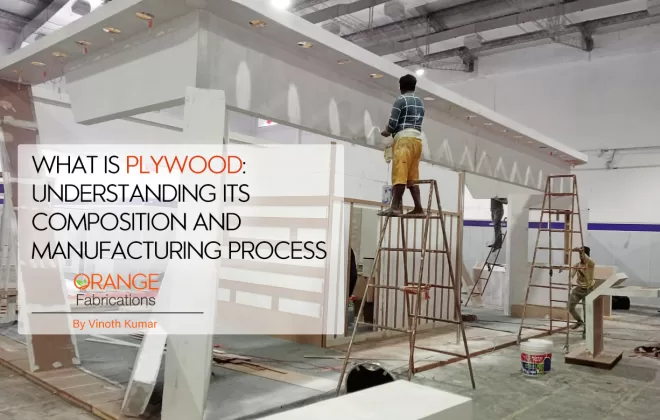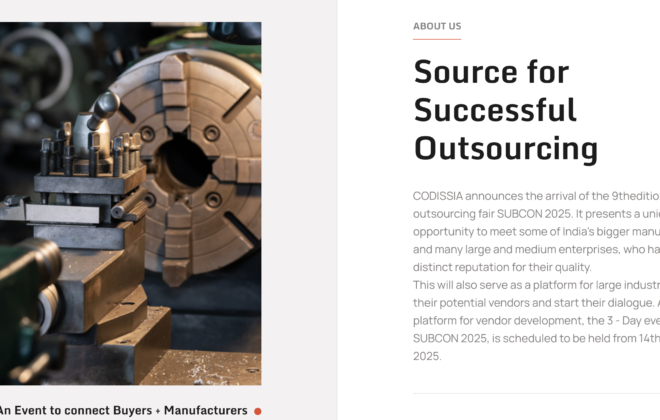From Concept to Completion: A Guide to Exhibition Stand Design
How To Design Exhibition Stall :
Are you planning to participate in a trade show or exhibition event and want to know how to design exhibition stall? Creating an impressive and effective exhibition stand design can be overwhelming, especially if it’s your first time. But don’t worry – we’ve got you covered! In this comprehensive guide, we’ll take you on a journey from concept to completion of your exhibition stand design. You’ll learn how to design exhibition stall and the key elements involved in designing a standout display that will grab attention and leave a lasting impression with attendees. So let’s get started!
Introduction to how to design exhibition stand.
The process of designing and building an exhibition stand can be a daunting task, but with careful planning and execution it can be a rewarding experience. This guide will take you through the process of designing and building an exhibition stand, from concept to completion.
When starting the design process, it is important to first consider the goals and objectives of your exhibit. What message do you want to communicate? Who is your target audience? Once you have a clear understanding of your goals, you can begin to develop a concept for your stand.
The next step is to begin sketching out your ideas. This is where you can really start to get creative and think about how you want your stand to look and function. Once you have some preliminary sketches, it’s time to start thinking about the construction of your stand. What materials will you need? How will everything fit together?
As you finalise the details of your design, it’s important to keep in mind the trade show environment in which your stand will be located. How much foot traffic do you expect? What are the physical dimensions of your space? These factors will influence the final design of your exhibition stand.
After all the planning and design work is complete, it’s time to start building! This is where all of your hard work comes together and you finally get to see your vision come to life. Depending on the size and complexity of your project, this stage can take anywhere from a few days to several weeks.
How to design exhibition stall –
Considerations for Exhibition Stand Design
When planning your exhibition stand design, there are a few key considerations to keep in mind. First, consider your target audience and what you want to achieve with your exhibit. Is your goal to generate leads, build brand awareness, or both? Once you know your goals, you can start to develop a concept for your stand that will engage and attract your target audience.
Next, think about the overall look and feel of your stand. What colors and materials will you use? How will you arrange the space to create an inviting and effective layout? Keep in mind that first impressions are important, so make sure your stand makes a good one!
Finally, don’t forget the details. Make sure everything from signage to packaging is on brand and looks professional. Little things can make a big difference, so pay attention to the details when planning your exhibition stand design.
– Budget and Timelines
When it comes to designing and building an exhibition stand, budget and timelines are two of the most important factors to consider.
The first step is to get a clear understanding of your budget. How much can you realistically afford to spend on your stand? Once you have a figure in mind, you can start to work out what kind of stand you can realistically achieve within that budget.
Next, you need to think about timelines. When does the exhibition take place? When do you need to have the stand ready by? Work backwards from the date of the exhibition and allow yourself enough time to design and build the stand without rushing things.
Keep in mind that good quality stands takes time and money to create, so don’t cut corners when it comes to budget or timeline – otherwise, you may end up with a substandard stand that doesn’t do your business justice.
– Branding, Materials and Colors
Your exhibition stand is your shop window – it’s how you show the world what your brand is all about. That’s why getting the branding, materials and colors right is so important.
There are a few things to consider when it comes to your stand’s branding. First, think about your target audience. What kind of impression do you want to make on them? What colors and styles will appeal to them?
Once you’ve decided on a general direction, it’s time to start thinking about specific design elements. Your logo should be prominently displayed, but don’t overcrowd the space with too much text or imagery. Keep things clean and simple for maximum impact.
The materials you use for your stand can also say a lot about your brand. A sleek, minimalist approach might suggest a high-end, premium product. Whereas brighter colors and fun shapes could imply that your brand is youthful and energetic. Consider what would work best for your particular product or service.
When it comes to colors, again think about what message you want to communicate. Bold primary colors can be eye-catching and attention-grabbing, while softer pastel tones convey a more relaxed vibe. Choose wisely based on the overall feel you’re going for with your stand.
Putting together an exhibition stand can seem like a daunting task, but if you take the time to plan ahead and consider all of the key elements, you’ll end up with a space that perfectly reflects your brand identity –
– Functionality and Accessibility
Your exhibition stand is the face of your company at trade shows and other events. It’s important to make sure that your stand is well-designed and functional so that it makes a good impression on potential customers.
Your exhibition stand should be designed to showcase your products or services in the best possible light. It should be easy for visitors to access and navigate, with clear signage that helps them find what they’re looking for.
Your exhibit stand should also be accessible for all visitors, including those with disabilities. Make sure there’s enough space for wheelchair users to move around easily, and use Braille or tactile signage for any information that needs to be conveyed visually.
The Design Process
The design process is the set of steps that are followed in order to create a successful exhibition stand design. A good design process will ensure that all the necessary details are considered, and that the final product is an effective and eye-catching display that accurately represents your brand.
There are a few different approaches that can be taken when it comes to exhibition stand design, but most designers will follow a similar basic process:
1. Define the goals and objectives of the project. What are you hoping to achieve with your exhibition stand? What message do you want to communicate? Who is your target audience? Answering these questions will help to inform the rest of the design process.
2. Research and gather inspiration. Once you know what you want to achieve, it’s time to start looking at some examples of Exhibition Stand Designs that have been successfully executed in the past. This research will help to give you some ideas and inspiration for your own project.
3. Develop concepts and sketches. Once you have a good idea of what you want your exhibition stand to look like, it’s time to start sketching out some concepts. This is where you’ll really start to bring your ideas to life and get a better understanding of how everything will come together.
4. Create detailed drawings and 3D models. Once you’re happy with a concept, it’s time to start creating detailed drawings and 3D models. This stage is important in ensuring that all the
– Researching Trends in the Industry
When it comes to exhibition stand design, research is key. You need to understand the latest industry trends in order to create a stand that will appeal to your target audience.
One way to stay up-to-date with trends is to attend trade shows and exhibitions. This will give you a chance to see what other companies are doing with their stands, and you can take inspiration from their ideas.
It’s also important to read industry publications. This will help you learn about new products and services that could be used in your exhibit design. Additionally, you can get inspiration for your own designs by looking at the work of other designers.
– Creating a Detailed Plan
When it comes to exhibition stand design, the devil is in the details. A well-executed design is the result of careful planning and attention to detail.
The first step in creating a detailed plan is to determine the goals of the exhibit. What are you trying to achieve? What message do you want to communicate? Once you know what you want to accomplish, you can start to develop a more specific plan.
Next, you’ll need to consider the logistics of your exhibit. Where will it be located? How big does it need to be? What kind of power and Internet access will be available? Answering these questions will help you determine what kind of equipment and materials you’ll need.
Once you have a good understanding of the goals and logistics of your exhibit, you can start developing a more detailed plan. This should include everything from the layout of your exhibit to the specific products or services you’ll be featuring. The goal is to create a plan that covers every aspect of your exhibit so that nothing is left to chance.
Creating a detailed plan may seem like a lot of work, but it’s essential for ensuring that your exhibit is successful. By taking the time to think through every aspect of your exhibit, you can avoid potential problems and ensure that your visitors have a positive experience.
– Building Your Exhibition Stand Prototype or Mock-Up
When you have your exhibition stand concept and design finalised, it’s time to start thinking about how to bring your vision to life. One of the first steps in this process is creating a prototype or mock-up of your stand, which will help you visualise the finished product and make any necessary adjustments to the design.
Building a prototype or mock-up of your stand can be a daunting task, but with careful planning and execution it can be a smooth and enjoyable process. Here are a few tips to help you get started:
1. Start with the basics: Begin by creating a basic model of your stand using simple materials like cardboard or foam board. This will help you get a feel for the size and proportions of your stand, and give you a starting point for adding more details later on.
2. Add some flair: Once you have the basic shape of your stand established, it’s time to start adding some details. Consider things like finishes, graphics, lighting, and furniture to make your stand more realistic.
3. Get creative: Don’t be afraid to think outside the box when designing your mock-up. Use whatever materials and methods you think will best capture the look and feel of your finished exhibition stand.
4. Be patient: Rome wasn’t built in a day, and neither is an exhibition stand! Take your time in crafting each element of your mock-up, and don’t hesitate to ask for help from friends
Implementing Your Design
Your exhibition stand design is only as good as its execution. The best way to ensure a successful outcome is to work with a professional exhibition stand builder who can bring your vision to life while staying within your budget.
Here are a few tips for working with an exhibition stand builder:
1. Be clear about your budget from the start. This will help the builder to create a custom solution that fits your needs.
2. Share your ideas and expectations with the builder so they can understand your vision. The more information they have, the better they can serve you.
3. Trust the builder’s expertise. They have likely worked on hundreds of stands and know what works best from both a design and logistical standpoint.
4. Keep communication open throughout the process so that everyone is on the same page and there are no surprises at the end.
Following these tips will help you get the most out of working with an exhibition stand builder and result in a stand that accurately reflects your brand and leaves a lasting impression on visitors.
Conclusion: Creating an Exhibition Stand that Meets Business Goals
When it comes to trade show success, your exhibit is key. It’s important to spend time considering your objectives and goals for the show, and how your exhibit can best support them. With careful planning and execution, you can create an exhibition stand that helps you meet your business goals and leaves a lasting impression on potential customers.
Hope you have learned about how to design exhibition stall. Happy designing.
 Want more clarification?
Want more clarification?
Please don’t hesitate to call us or mail us. 9003631393 or mail us at reachus@stallfabrication.in
Orange Fabrication Is A Company Of Orange Art Factory – Event Management Company




